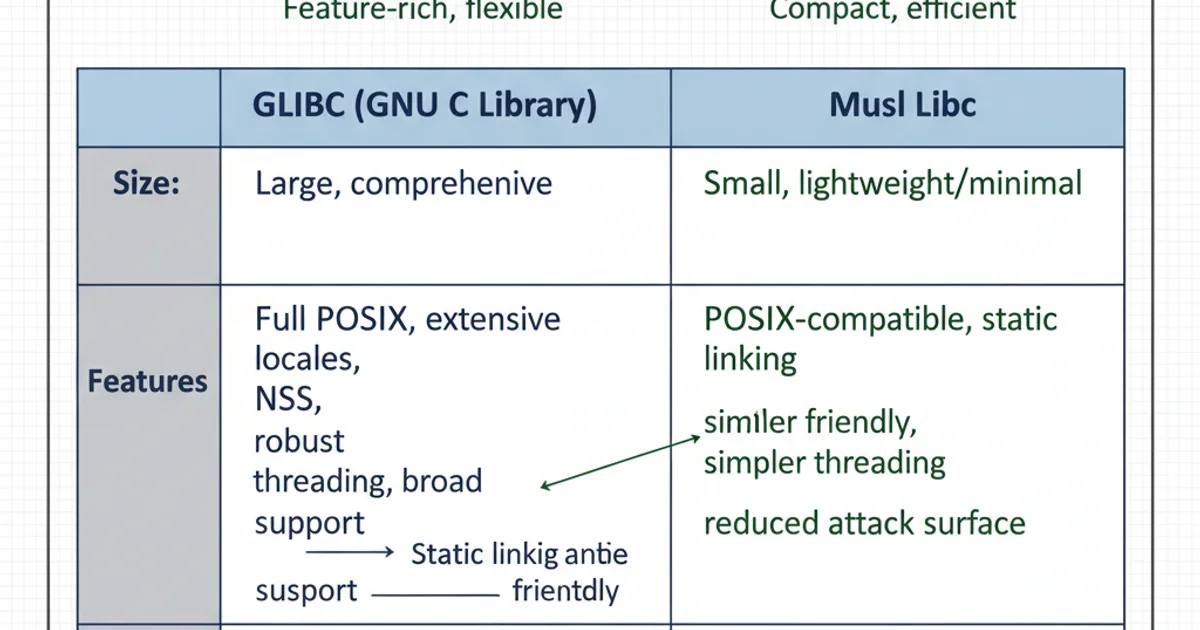What is GLIBC? What is it used for?
Categories:
Understanding GLIBC: The Foundation of C Programming on Linux

Explore what GLIBC is, its critical role in Linux systems, and how it provides essential functionalities for C programs.
When you write a C program on a Linux system, you're not just interacting with the kernel directly. Instead, your program relies heavily on a crucial layer of software known as the GNU C Library, or GLIBC. This library is an indispensable component of virtually every Linux distribution, providing the fundamental building blocks that allow C programs to run and interact with the operating system. Without GLIBC, most C applications, and by extension, much of the Linux ecosystem, would simply not function.
What is GLIBC?
GLIBC, short for GNU C Library, is the GNU Project's implementation of the standard C library (libc). It's a collection of core routines that C programs use to perform common tasks. These tasks range from basic input/output operations (like printing to the console or reading from a file) to complex memory management, string manipulation, mathematical functions, and even network communication. It adheres to standards like POSIX and ISO C, ensuring a high degree of compatibility and portability for C applications across different Unix-like systems.
flowchart TD
A[C/C++ Application] --> B["GLIBC (GNU C Library)"]
B --> C["System Calls (Kernel Interface)"]
C --> D[Linux Kernel]
D --> E["Hardware (CPU, Memory, I/O)"]
subgraph GLIBC Functions
B1["I/O Operations (printf, scanf)"]
B2["Memory Management (malloc, free)"]
B3["String Manipulation (strcpy, strlen)"]
B4["Math Functions (sin, cos)"]
B5["Networking (sockets)"]
end
B --> B1
B --> B2
B --> B3
B --> B4
B --> B5Simplified diagram illustrating how a C application interacts with the Linux kernel through GLIBC.
Key Functions and Importance
GLIBC provides a vast array of functions that are essential for any C program. When you include headers like <stdio.h>, <stdlib.h>, or <string.h> in your C code, you're implicitly declaring your intention to use functions provided by GLIBC. These functions are not part of the C language specification itself but are standard library implementations that the language relies upon for practical use. Its importance cannot be overstated; it acts as the primary interface between user-space applications and the Linux kernel, abstracting away the complexities of direct system calls.
#include <stdio.h>
#include <stdlib.h>
#include <string.h>
int main() {
char *message = "Hello, GLIBC!";
printf("%s\n", message); // Uses GLIBC's printf
char *buffer = (char *)malloc(20); // Uses GLIBC's malloc
if (buffer == NULL) {
perror("malloc failed");
return 1;
}
strcpy(buffer, message); // Uses GLIBC's strcpy
printf("Copied message: %s\n", buffer);
free(buffer); // Uses GLIBC's free
return 0;
}
A simple C program demonstrating common GLIBC functions.
-lc explicitly, as it's handled during the linking phase.GLIBC vs. Musl libc and Other C Libraries
While GLIBC is the de facto standard C library on most Linux systems, it's not the only one. Other C libraries exist, such as Musl libc, which is known for its smaller footprint and static linking capabilities, making it popular in embedded systems and containerized environments. The choice of C library can impact application size, performance, and compatibility. GLIBC is generally preferred for its comprehensive feature set, robust performance, and wide compatibility with existing software.

A high-level comparison of GLIBC and Musl libc.
In summary, GLIBC is a cornerstone of the Linux operating system, providing the essential runtime environment for C and C++ applications. Its extensive set of functions simplifies programming, ensures compliance with standards, and facilitates the interaction between user-space programs and the kernel. Understanding GLIBC is key to comprehending how C programs operate within the Linux ecosystem.